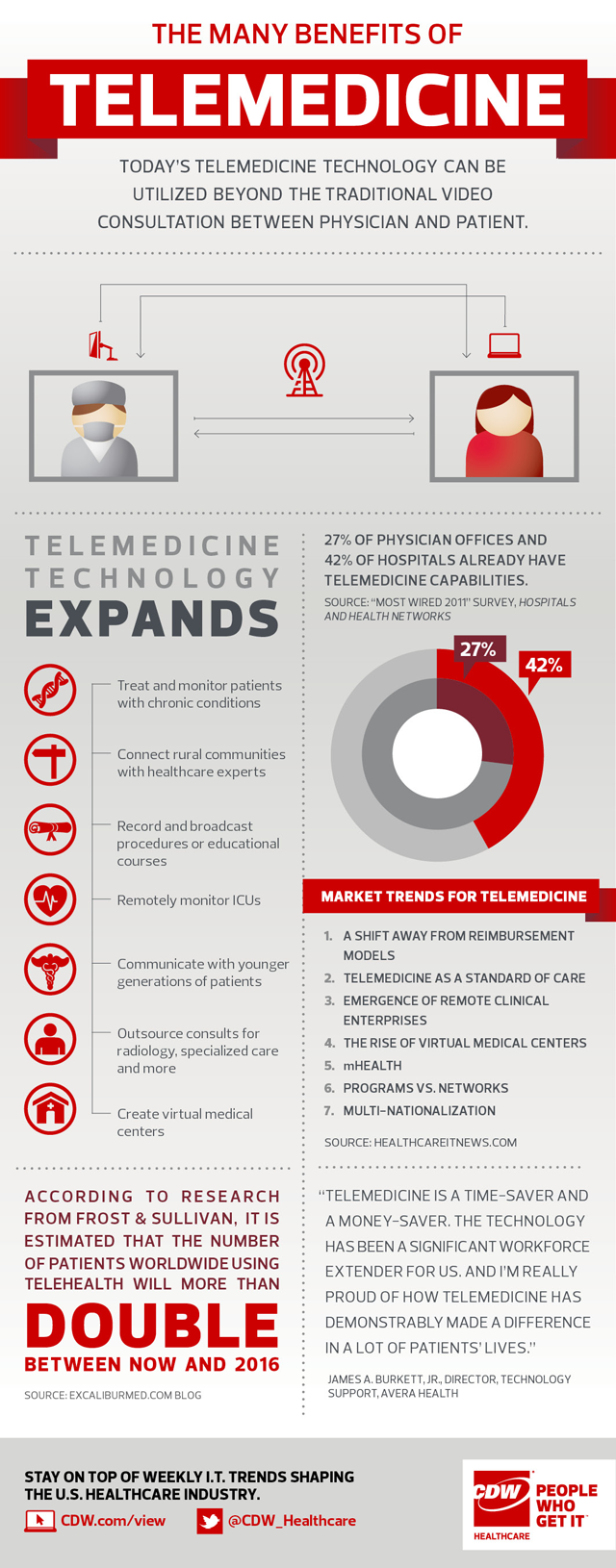Thanks to modern advances in technology, it is possible to get a medical question answered without having to go visit your local doctor. Whether you log onto a medical website, such as WebMD, or you speak remotely with a doctor either through a forum, a specific website, or even by webcam, the field of Telemedicine continues to grow and provide people with a resource that can help them have the peace of mind that a definitive medical answer can provide.
On the other side of the issue, Telemedicine may lead to an inaccurate assessment of a patient in certain circumstances, thereby preventing medical care from being administered.
Here Are the Pros of Telemedicine
One of the primary benefits of Telemedicine is the convenience of it. You don’t have to worry about showing up to the doctor’s office 20 minutes before your appointment, having to wait for your doctor for another 30 minutes, and then lose half your work day just because you’ve got a sinus infection. Telemedicine eliminates the wait times at the office because you can wait at work or home for a doctor to be available. This helps to facilitate common reasons for visiting a doctor, such as a bad cold.
Telemedicine also helps to enhance communication between providers. For specific health needs, such as migraine headaches, you might normally have to speak to two or three different doctors separately to keep everyone up-to-date with your symptoms and overall condition. Telemedicine allows you to communicate to all members of your diagnostic team simultaneously, letting each level of doctor, from the specialist to your PCP, know what is going on.
Here Are the Cons of Telemedicine
The primary issue with Telemedicine is that a doctor cannot perform a physical exam. This exam is necessary to properly diagnose certain conditions, meaning that a certain level of patient care cannot be provided through its use.
Another issue with Telemedicine is that it is reliant on current technology. All it takes is the accidental unplugging of a modem to disconnect a session with a doctor. Bad weather or a power outage on either side could also hinder a consultation with a doctor, which is something that wouldn’t be hindered by a physical exam.
Many doctors are resistant to Telemedicine because of the physical difficulties with remotely diagnosing a patient. This is slowly beginning to change, however, as patients with chronic illnesses can easily check-in through Telemedicine instead of needing to travel to the office to be seen.
Is Telemedicine Right For You?
Telemedicine has many advantages, but there are also some disadvantages to it as well. It all depends on what is going on with each patient and whether a physical exam is necessary for a diagnosis. If a physical exam isn’t required, then Telemedicine could be a cost-effective, time-saving addition to the field of medicine that could greatly expand care. Check with your provider to see if Telemedicine is an option for you in your area!
